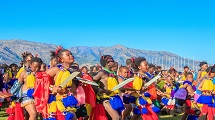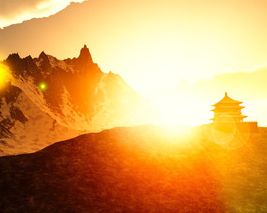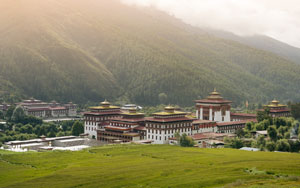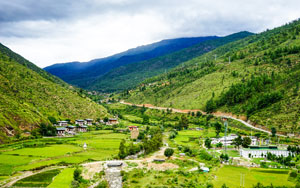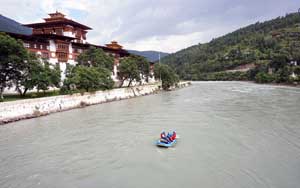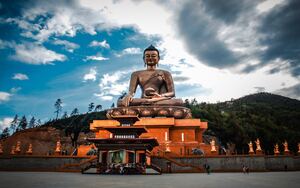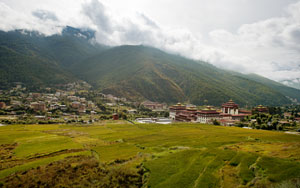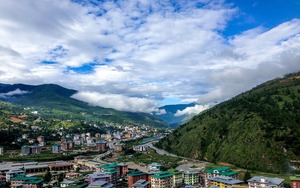You can experience this Bhutan festival across different temples, dzongs and monasteries in the country. While the dates vary, what stays the same is the grandiosity of the occasion, the coming together of communities, the joy and reverence, and to top it all off, some spectacular Bhutanese traditions that are millennia old. Witness monks and local village men dressed in authentic wooden masks, soak in performances that each tell a story of their own about the history of Bhutan. See parts of Guru Rinpoche’s life and times come to life through these dances, giving it so much more meaning than only seeing a statue or a painting.
The biggest Tshechus (an annual religious festival meaning "tenth day") you can go for are the Paro and Thimphu Tshechus, where the celebrations are more expansive and the tourists always flock. The one at Paro is held at the Rinchen Pung Dzong, across 5 days, usually in late March or April. Each day has a series of performances and colourful displays, with neighbouring communities all coming into town to participate. Some of the highlights you’ll get to see are the sacred dances like “Black Hat Dance” or “Dance of the Terrifying Deities”. Don’t be startled by the “Atsaras” or clowns, with their big red masks and spooky grins — they are like the guides of Tshechu. Making jokes, translating the performances, interacting and joking with the crowd. Their appearance is a mere reminder that there is no guarantee what physical form your next life will take.
The celebrations in Paro culminate with the unfurling of a 4-storey high “thangka” or religious scroll before dawn, a sight to behold! But even if you can’t make it to Paro, you can always catch the national festival of Bhutan in the capital, Thimphu. Established in 1670, this Tshechu is celebrated in the 8th month of the Bhutanese calendar, usually between September and October. Expect to see similar sights as in Paro, on just as large a scale. At this 3-day spectacle, locals dress in their finest, as thousands flock to the fortress courtyard of the Tashichho Dzong. Follow them and find a comfortable spot to soak it all in.





